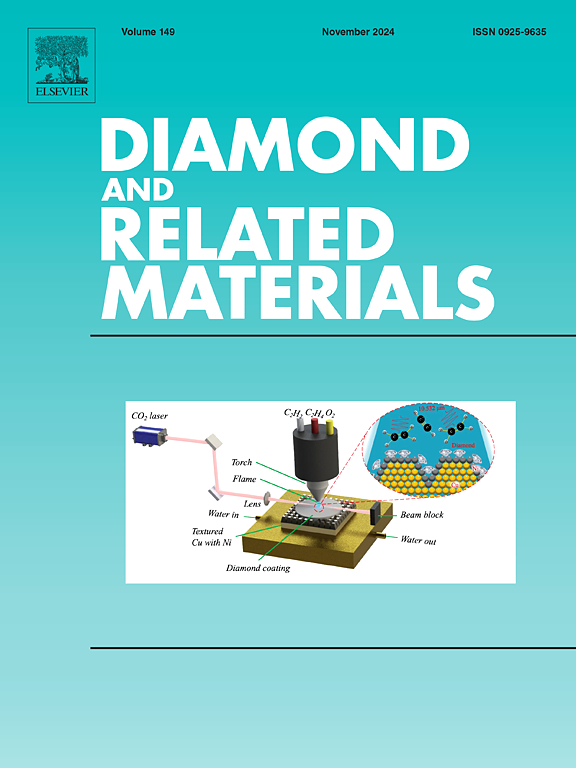磁性硫化铋修饰活性炭纳米复合材料超灵敏电化学测定实际样品中的非洛地平
IF 5.1
3区 材料科学
Q2 MATERIALS SCIENCE, COATINGS & FILMS
引用次数: 0
摘要
可靠和准确的分析技术对于检测实际样品中的非洛地平(FLD)至关重要,非洛地平是一种用于治疗高血压的钙通道阻滞剂。在本研究中,基于磁性硫化铋负载活性炭纳米复合材料修饰的碳糊电极(CPE) (M@Bi2S3NPs-AC),设计了一种具有增强传感性能的伏安传感器,用于FLD的电化学检测。通过SEM、XRD、TEM和EDX表征,证实了所合成的纳米复合材料的有效发育。在多孔交流网络中,Fe3O4和Bi2S3 NPs的结合形成了多功能杂化结构,其中,AC改善了FLD的积累并提供了导电主干,Bi2S3加速了电氧化反应,Fe3O4增强了磁性处理、稳定性和导电性,确保了大的电活性表面积和快速的电子转移。在差分脉冲伏安法(DPV)的理想条件下,该传感器在0.009 ~ 3 μM的浓度范围内与FLD呈线性相关,检测限低至2.3 nM。该技术表现出超过四周的稳定性,良好的重现性(RSD = 0.48%),即使在频繁干扰的情况下也具有出色的选择性。通过对片剂和人血清样品的FLD进行评价,证实了该传感器的实际应用价值,回收率为97.2 ~ 102.8%。该传感器为医学和质量控制实验室提供了一种快速、经济、准确的检测FLD的方法。本文章由计算机程序翻译,如有差异,请以英文原文为准。

Magnetic bismuth sulfide-decorated activated carbon nanocomposite for ultrasensitive electrochemical determination of felodipine in real samples
Reliable and accurate analytical techniques are vital for detecting felodipine (FLD), a calcium channel blocker used to treat hypertension, in real samples. In this study, a voltammetric sensor with enhanced sensing performance for the electrochemical detection of FLD is designed based on a carbon paste electrode (CPE) modified with magnetic bismuth sulfide loaded activated carbon nanocomposite (M@Bi2S3NPs-AC). The effective development of the synthesized nanocomposite was confirmed by its characterization using SEM, XRD, TEM and EDX. The combination of Fe3O4 and Bi2S3 NPs within the porous AC network results in a multifunctional hybrid where, AC improves FLD accumulation and provides a conductive backbone, Bi2S3 accelerates the electro-oxidation reaction, and Fe3O4 enhances magnetic handling, stability, and conductivity ensuring a large electroactive surface area and fast electron transfer. The sensor exhibited a linear correlation for FLD in the concentration range of 0.009–3 μM under ideal conditions using differential pulse voltammetry (DPV), with a low detection limit of 2.3 nM. The technique demonstrated stability over four weeks, good reproducibility (RSD = 0.48 %), and exceptional selectivity even in the presence of frequent interferents. By evaluating FLD in pharmaceutical tablets and human blood serum samples, the sensor's practical application was confirmed, yielding good recoveries (97.2–102.8 %). This suggested sensor provides a quick, economical, and accurate method for determining FLD in medical and quality control labs.
求助全文
通过发布文献求助,成功后即可免费获取论文全文。
去求助
来源期刊

Diamond and Related Materials
工程技术-材料科学:综合
CiteScore
6.00
自引率
14.60%
发文量
702
审稿时长
2.1 months
期刊介绍:
DRM is a leading international journal that publishes new fundamental and applied research on all forms of diamond, the integration of diamond with other advanced materials and development of technologies exploiting diamond. The synthesis, characterization and processing of single crystal diamond, polycrystalline films, nanodiamond powders and heterostructures with other advanced materials are encouraged topics for technical and review articles. In addition to diamond, the journal publishes manuscripts on the synthesis, characterization and application of other related materials including diamond-like carbons, carbon nanotubes, graphene, and boron and carbon nitrides. Articles are sought on the chemical functionalization of diamond and related materials as well as their use in electrochemistry, energy storage and conversion, chemical and biological sensing, imaging, thermal management, photonic and quantum applications, electron emission and electronic devices.
The International Conference on Diamond and Carbon Materials has evolved into the largest and most well attended forum in the field of diamond, providing a forum to showcase the latest results in the science and technology of diamond and other carbon materials such as carbon nanotubes, graphene, and diamond-like carbon. Run annually in association with Diamond and Related Materials the conference provides junior and established researchers the opportunity to exchange the latest results ranging from fundamental physical and chemical concepts to applied research focusing on the next generation carbon-based devices.
 求助内容:
求助内容: 应助结果提醒方式:
应助结果提醒方式:


